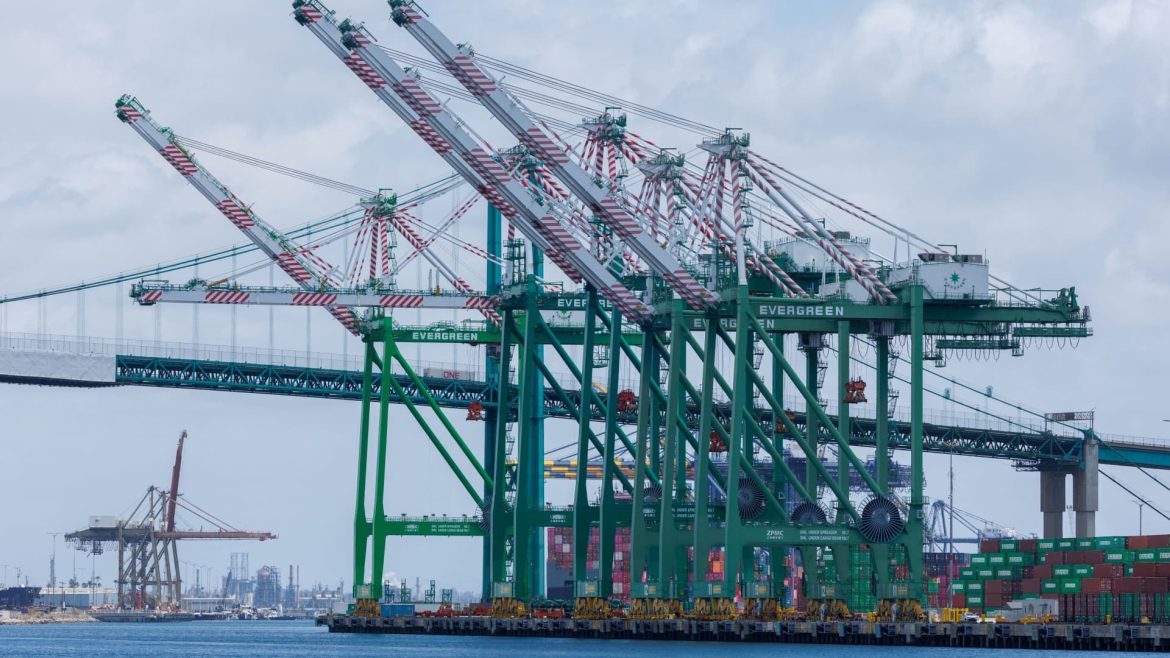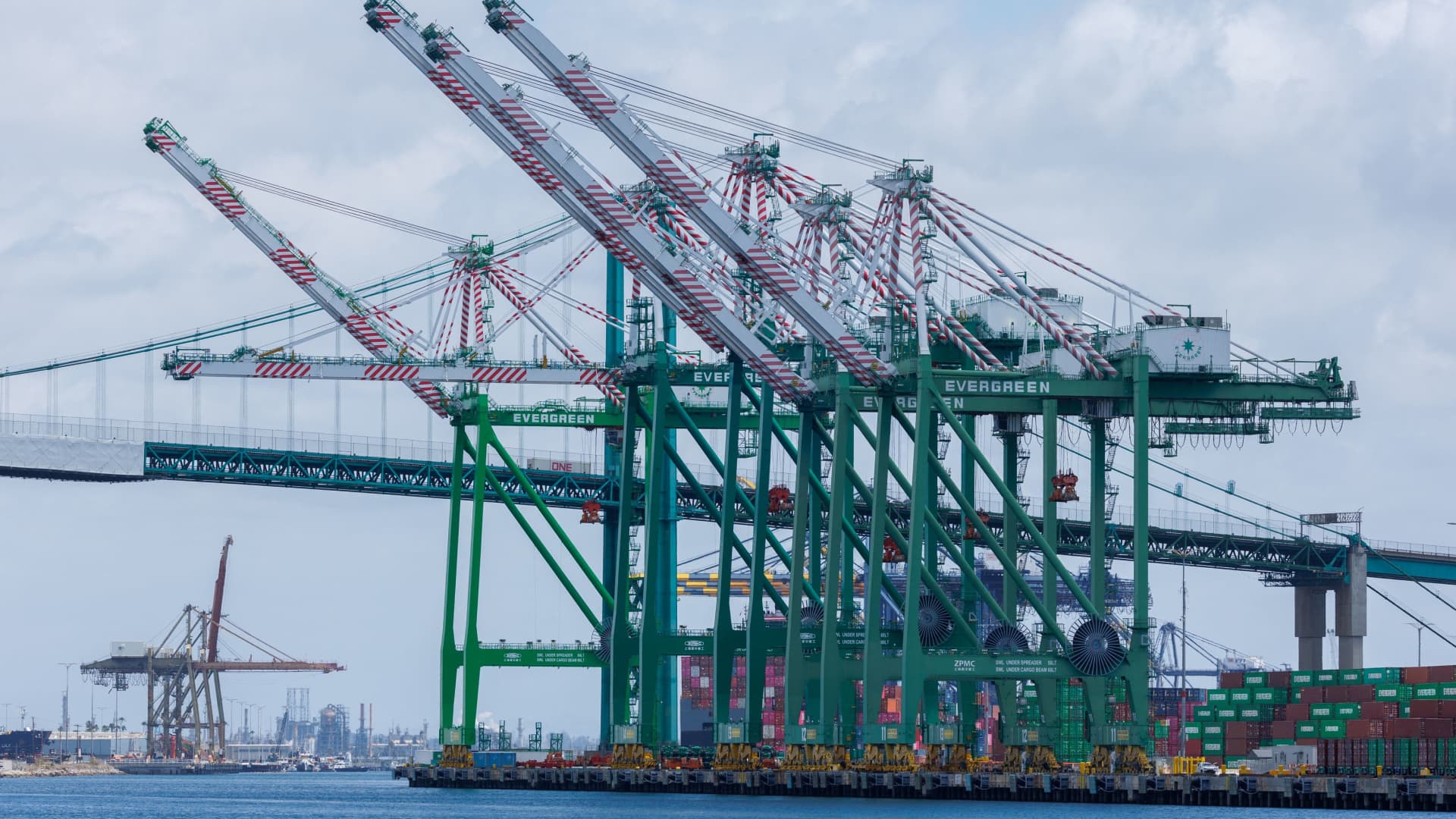The dramatic narrowing of the U.S. trade deficit in April 2025 marks a significant shift in the nation’s trade landscape, primarily driven by an unprecedented plunge in imports. This shift underscores the profound impact of policy measures, particularly the tariffs enacted under President Donald Trump’s administration, and provides insight into evolving economic dynamics that carry wide-reaching consequences.
Dramatic Decline in Imports as a Catalyst
April 2025 witnessed a historic drop in U.S. imports, collapsing by 16.3% to $351 billion, with goods imports declining even more steeply by 19.9% to $277.9 billion. This represents the largest monthly decrease on record, a stark reversal from the surge in imports earlier in the year. The plunge was concentrated notably in consumer goods and motor vehicle-related imports, with passenger cars alone accounting for a significant share of the drop.
This drop can largely be attributed to the unwinding of “front-loading” — a phenomenon where companies accelerated their imports in previous months to beat the imposition of new tariffs. Once that rush subsided in April, the demand for imports contracted sharply. The decline effectively reversed the record surge in imports seen in the first quarter, which had expanded the trade deficit to an all-time high.
Impact of Trump’s Tariffs on Trade Flows
The tariffs introduced under Trump’s trade policy, including steep duties on imports from China, Mexico, and Canada, have reshaped global trade patterns by altering the economics of importing goods into the U.S. While initially prompting an upward spike in imports as businesses stockpiled goods, the tariffs’ continuing presence tempered import demand in April. The data suggests a sustained impact, with companies and consumers re-evaluating their purchasing and supply chain strategies in response to increased costs.
Importantly, despite this sharp monthly decline, overall imports in the first four months of 2025 remained about 20% higher compared with the same period in 2024. This indicates that while the front-loading effect has faded, the baseline level of imports was elevated, signaling lingering complexities in trade flows and supply chains.
Narrowing Trade Deficit: A Mixed Economic Signal
As imports plunged, exports rose modestly—up about 3% in April—further contributing to the narrowing of the overall goods and services trade deficit to $61.6 billion from $138.3 billion in March. This 55.5% reduction is the largest one-month drop ever recorded.
While a shrinking trade deficit is generally favorable, signaling reduced reliance on foreign goods and potentially improving the U.S. current account balance, the circumstances here are nuanced. The deficit contraction came amid slowing domestic demand for imports, which may reflect weakening consumer and business spending rather than purely trade policy success. Moreover, the significant reduction in imports contributed to a drag on economic growth, with the first quarter of 2025 already registering a 0.2% decline in gross domestic product (GDP).
Broader Economic and Global Trade Implications
The shrinking trade deficit and the import plunge have cascading effects beyond U.S. borders. For example, Canada experienced a sharp widening of its trade deficit in April, with exports to the U.S. dropping significantly, partly due to reduced American demand. Similarly, trade volumes between the U.S. and Asia tumbled as tariffs curtailed flows of goods, disrupting established trading relationships and supply chains.
This reordering of trade balances also raises questions about the sustainability of current trade practices and tariffs as policy tools. The volatility induced by abrupt tariff implementations and the resulting stockpiling creates unpredictability for businesses and global markets, affecting investment decisions and economic forecasts.
Conclusion: A Turning Point Marked by Complexity
April 2025’s dramatic narrowing of the U.S. trade deficit, triggered by a record decline in imports, illustrates how trade policy can produce swift and significant economic shifts. The data reveals that Trump’s tariffs have had a pronounced effect on the flow of goods, curbing imports but also highlighting vulnerabilities tied to front-loading behaviors and fluctuating demand.
While the narrowing deficit may appear positive on the surface, the context points to an underlying slowdown in economic activity and considerable adjustment pains for trade partners like Canada and Asian economies. As the U.S. navigates this transformed trade environment, policymakers and businesses alike will need to carefully balance the goals of protecting domestic industries and maintaining stable, predictable trade relationships critical for long-term economic health.
This moment serves as a stark reminder that trade policy is a double-edged sword—capable of delivering short-term gains in trade balances, yet also capable of disturbing the delicate equilibrium that supports sustained economic growth and international cooperation.





